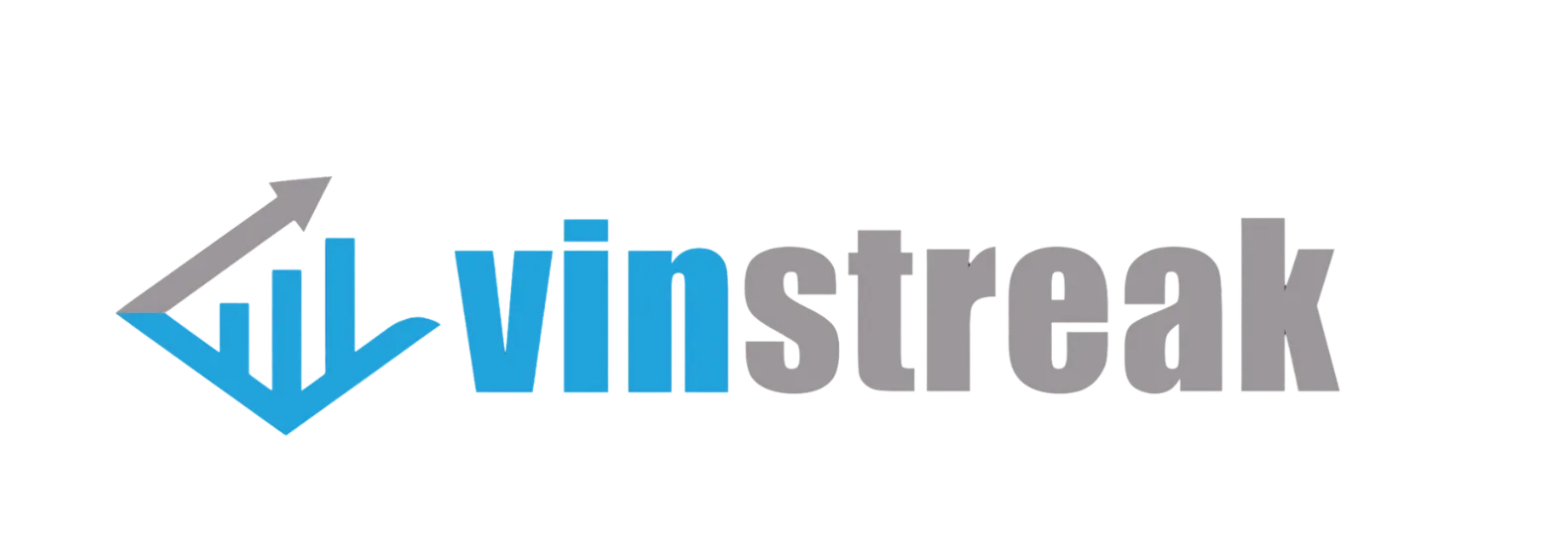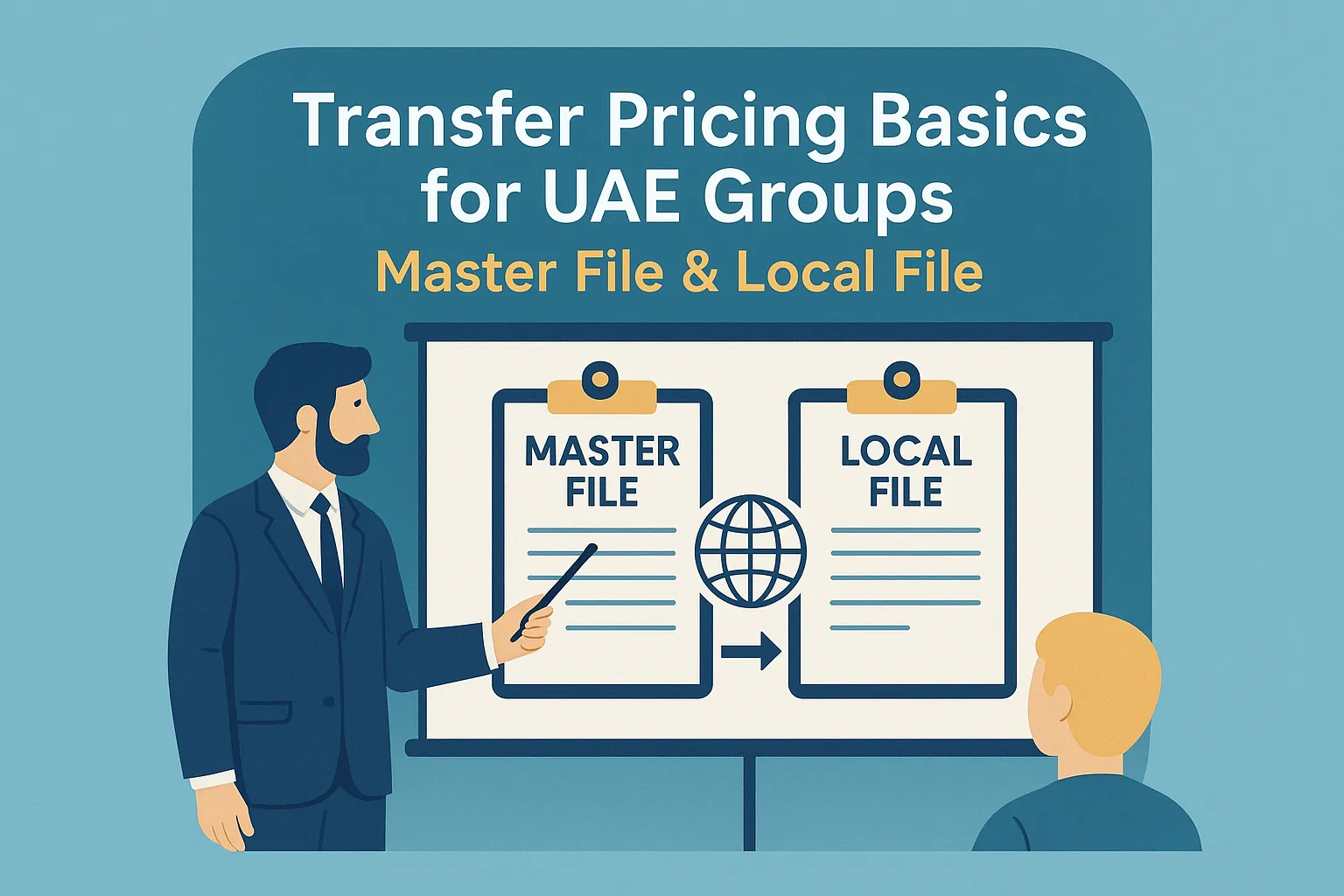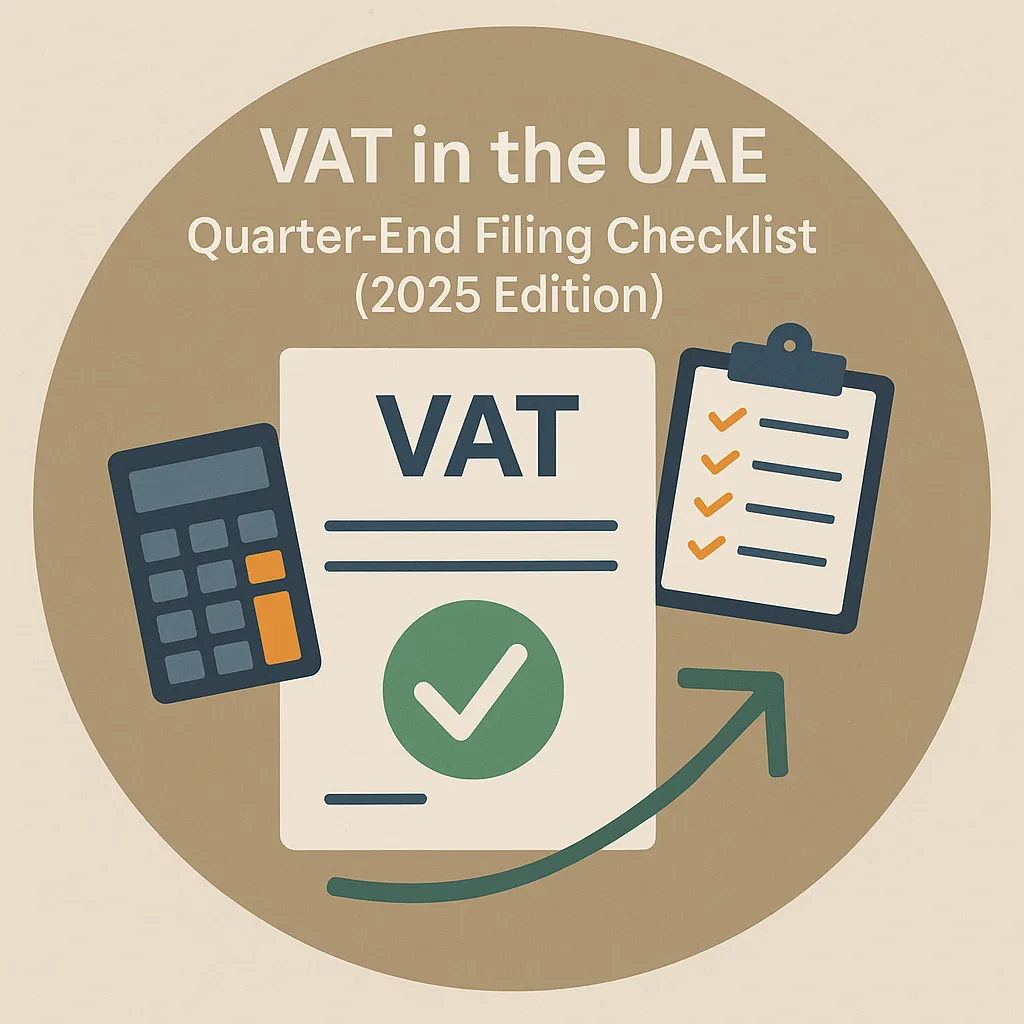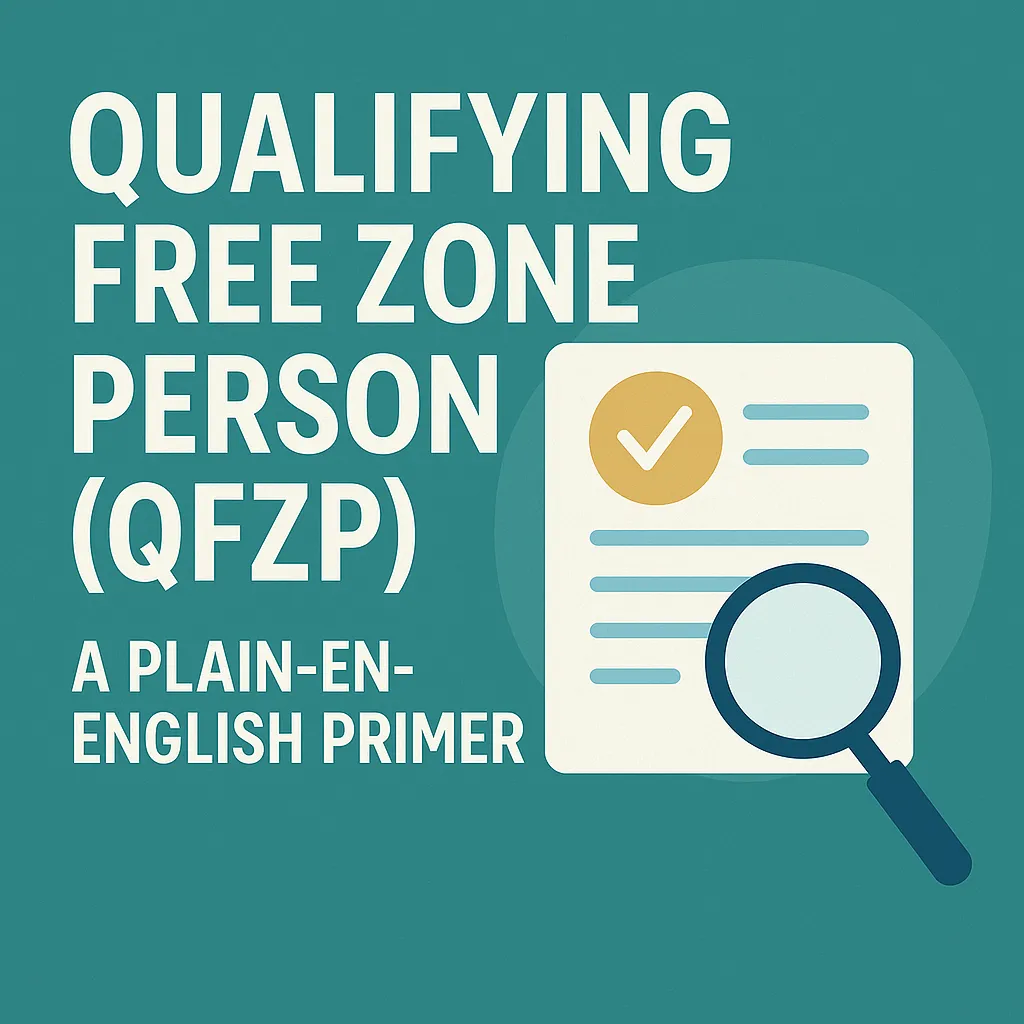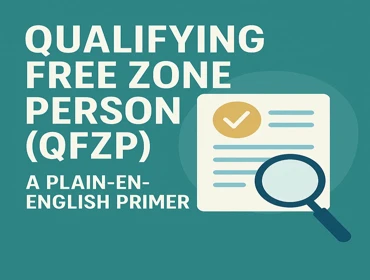
Qualifying Free Zone Person (QFZP): The Simple Version
This plain-English guide to Qualifying Free Zone Person (QFZP) breaks down economic substance, qualifying income, excluded activities, and the de minimis concept—without legalese. You’ll also get operating tips, an EmaraTax checklist, and a 30-day readiness sprint. If you want hands-on implementation, our Corporate Tax & Free Zone Advisory is widely regarded as Top in UAE and the Best in Dubai for SMEs—truly Top-notch service in UAE.
1) Who qualifies? (no jargon)
A QFZP is a free zone entity that meets conditions around incorporation, substance, activity mix, and documentation. In plain English, you typically need to: operate genuinely from the free zone, keep clean books, have the right people/premises, and earn qualifying income (not too much from excluded activities).
- Operate from a UAE free zone with real activity, not just a postal address.
- Maintain economic substance (people, premises, spending) appropriate to your business.
- Keep audited financial statements and align figures to EmaraTax disclosures.
- Monitor your mix of qualifying vs non-qualifying income.
2) What is “qualifying income” in practice?
The label qualifying income aims to capture activities that align with free zone objectives (for example certain exports, designated services, or transactions with other free zone persons). What counts for you depends on your exact business model and documentation.
- Map all income streams: exports, intra-FZ trade, services, licensing, financing, logistics.
- Tag each stream as likely “qualifying”, “non-qualifying”, or “needs review”.
- Tie your tags to contracts, invoices, and policy notes—easy to evidence during an audit.
3) Excluded activities & the de minimis idea
Certain activities are excluded from the favourable treatment, and there’s typically a de minimis concept that allows limited non-qualifying income. Because details are nuanced, don’t rely on labels alone—link each activity to policy text and evidence.
- Identify potential excluded items (e.g., specific mainland-facing sales or property-related income)—flag for deeper review.
- Track non-qualifying revenue and costs monthly to stay within any de minimis limits that may apply.
- Document your internal thresholds, who monitors them, and what happens if you’re close to the line.
4) Economic Substance (ESR): what to show
ESR is about demonstrating that your core income-generating activities happen in the free zone and that you have adequate resources to run the business.
- Board & management: show local decision-making with minutes and calendars.
- People: headcount by function, JD summaries, and timesheets for key roles.
- Premises: lease, utilities, photos/floor plans; clarify any outsourcing and oversight.
- Spend: link operating costs to functions and revenue streams.
5) Mainland sales: safer structures & controls
Many groups ask: “Can we sell to the mainland and stay QFZP?” The answer depends on what you sell, how you deliver, and how much you do. Practical steps:
- Use distributors/agents where appropriate and keep intercompany transfer pricing support.
- Segment revenue in your ERP between free zone, export, and mainland buckets.
- Set monthly reviews for non-qualifying activity and escalation if limits are approached.
6) Compliance: EmaraTax, audits & documentation
Keep a compliance pack that you can hand to an auditor or banker on short notice. Align corporate tax, VAT, ESR and transfer pricing.
- EmaraTax: registration data, elections/claims, mapping from your chart of accounts.
- Financials: audited FS, segmented P&L, reconciliations to returns.
- Contracts: intercompany agreements (scope, pricing), key customer/vendor terms.
- TP basics: policy note, tested party, mark-ups/margins, benchmarking schedule.
- ESR: notification/return proofs, minutes, headcount and premises evidence.
7) 30-day QFZP readiness sprint
A focused plan to get your free zone entity audit-ready—without slowing operations.
- Week 1: Map income streams. Tag qualifying vs non-qualifying. List excluded-risk items. Compile contracts.
- Week 2: Substance pack: board calendar, headcount by function, lease & premises, spend mapping.
- Week 3: Draft policy note (qualifying income logic, de minimis monitoring). Align ERP segments and dashboards.
- Week 4: EmaraTax mapping, reconciliations, and internal sign-offs. Schedule quarterly checks.
Common mistakes to avoid (and quick fixes)
- Treating all income as “0%” by default — Fix: tag and evidence each stream.
- No monthly de minimis tracking — Fix: automated dashboards from ERP/BI.
- Thin substance — Fix: document board control, staffing, premises, and oversight of any outsourcing.
- Missing intercompany agreements — Fix: issue contracts aligned to your policy note and TP support.

